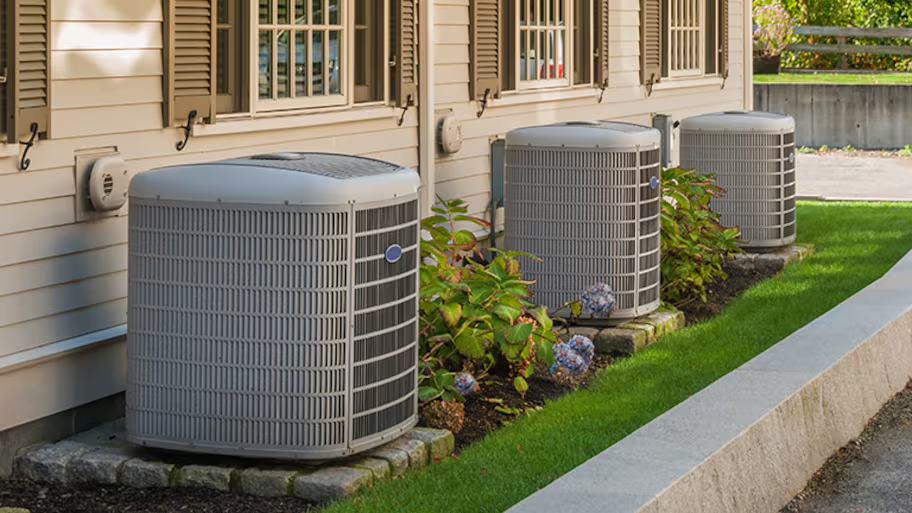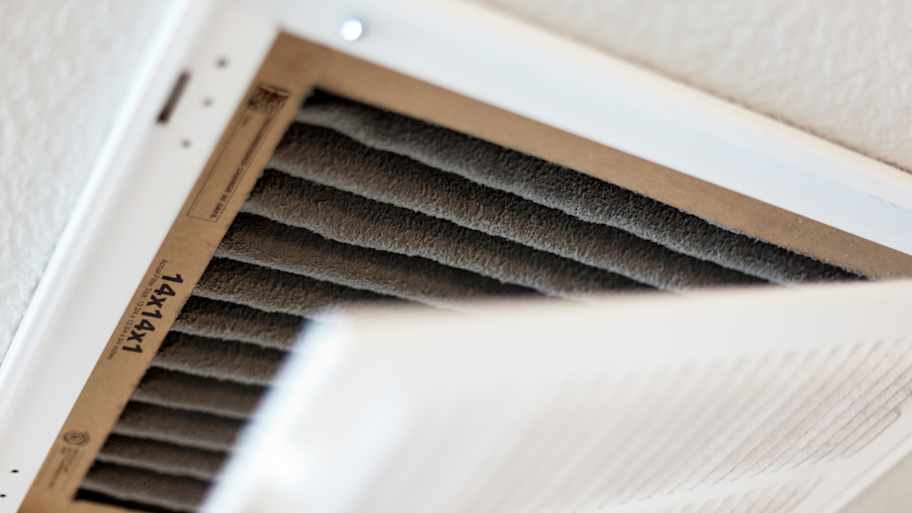
Average costs of HVAC inspections vary based on house size, location, and type of HVAC system. Follow our easy guide to gauge your home’s HVAC inspection cost.
Keep breezy air in and moisture-loving mold out


When climbing up on the rooftop, it's a good idea to familiarize yourself with basic ladder safety. This includes having another person down below to ensure you don't get hurt. Your ladder should be tall enough to reach the roof and be able to support you on the climb. If it rained recently, wait until your roof is dry. Wet roofs sharply increase the risk of a dangerous slip and fall. After the roof is dry and you can safely climb up with your spotter below, check for loose roofing tiles, wet leaves, and other potential hazards that could cause you to slip while working.
Climb up to the exterior side of the attic. Remove the damaged gable vent and trim boards surrounding it by scraping the old caulk around it with the utility knife, then remove the nails or screws using the nail puller or reverse function of the power drill.
Gently remove the vent and frame from the attic and put the trim boards to the side.
Use a rag to wipe off dead leaves, dirt, and other debris from the opening where the old vent was. It doesn’t need a broom-clean level of cleanliness that one would expect of a home that’s in move-in condition, but it’s important to get rid of dead leaves and anything else in the hole for the frame. Debris can make the new vent fit too awkwardly, and flyaway dirt can cause the caulk not to do its job. Swipe the rag over the adjacent shingles or tiles so that excess dirt and leaves don’t fly in your face, or into the wet caulk when you need to caulk the vent later.
With the utility knife or a patching knife, scrape off any leftover caulk where the old vent was. This is equally important as getting rid of debris because too much old caulk gumming up the frame can make it hard for the new vent to fit properly. Scrape it out like you’re clearing the charred bits off a grill or griddle with a metal spatula.

If your new vent comes with a frame, follow the manufacturer’s installation directions. If you need to make your own frame, pop the two-by-four into the bottom of the vent opening. Depending on the size of both the new gable vent and the opening, you might need multiple two-by-fours to create a makeshift frame. Your goal is to get the gable vent to properly fit into the opening without huge gaps on any sides.
Once you’ve gotten the new frame to fit into the vent opening with no gaps left, hammer the frame between the gable end and studs with 8d nails. Ensure there's a clearance of 1/8 inch on all sides of the frame. The fit should be snug, without huge gaps, but it doesn’t need to be completely airtight.
Put the replacement gable vent into the frame. Adjust the fit as needed, particularly if you need to stop what you’re doing, and get additional two-by-fours or scrap wood so the frame properly fits both the hole and the new gable vent.
Once you have that snug fit that you need, attach the new gable vent with the power drill and galvanized screws. If your new vent came with hardware from the manufacturer, you can use that instead of your own screws.
Once the screws are firmly in place, caulk the edges of the vent and let it cure for at least one hour. The pre-built or makeshift frame should fill the gaps in the hole, but the caulk should cover that 1/8" clearance from earlier for all the outer edges.
It’s a good idea to have your caulking gun prepped before you take it up to the roof. Applying caulk can take practice, and silicone-based caulk is a must for gable vents since it keeps moisture out.
Replace the trim boards that were removed when extracting the damaged gable vent. Put a bead of caulk into every seam between the vent and boards, then let it set for at least an hour.
Think of it like creating a very delicate and artisanal plate of nachos, except you should never place caulk in the microwave to get it to spread faster.

After the caulk around the vent and trim boards are completely cured, use a clean cloth to apply the oil-based primer to the trim boards and let it dry. Use paint thinner to clean your paintbrush.
Once the primer is completely dry, apply two coats of the oil-based paint of your choice. Wait for the first coat to fully dry before applying the second coat, then clean your paintbrush with paint thinner again.
Installing a new roof vent is a relatively budget-friendly project if you’re a DIYer. A new gable vent and related supplies cost around $150 to $200.
However, if you don’t feel safe doing this work several feet above the ground, it’s best to hire a licensed and insured local roofing company. The cost to hire a professional roofer will be significantly less than the hospital bills and lost income if you fall badly. If you hire a pro to do the work, they’ll charge around $40 to $80 per hour not including supplies.
Your local duct installer may also have the proper license and bonding to install roof ventilation systems like gable vents. They can help determine the best ventilation solution for your attic and entire home to prevent mold growth and address other concerns you have.
From average costs to expert advice, get all the answers you need to get your job done.

Average costs of HVAC inspections vary based on house size, location, and type of HVAC system. Follow our easy guide to gauge your home’s HVAC inspection cost.

Whether your energy bills are out of control or you can’t keep your home comfortable, it’s good to know what costs to expect before you pay to insulate your ductwork.

HVAC replacement costs depend on a lot of factors, like unit type, size, and labor. See what you can expect to pay for HVAC replacement here.

Hydronic baseboard heaters use water to distribute radiant heat. This makes them more energy-efficient and cost-effective than conventional electric types. Learn more about hydronic baseboard heaters and the pros and cons of their operation.

The pros and cons of fiberglass air filters reveal whether this wallet-friendly option can clean the air enough for you to breathe easily.

Trying to choose between a MERV10 versus a MERV12 air filter? Compare filtration, airflow, and allergy protection to find the right fit for your home.